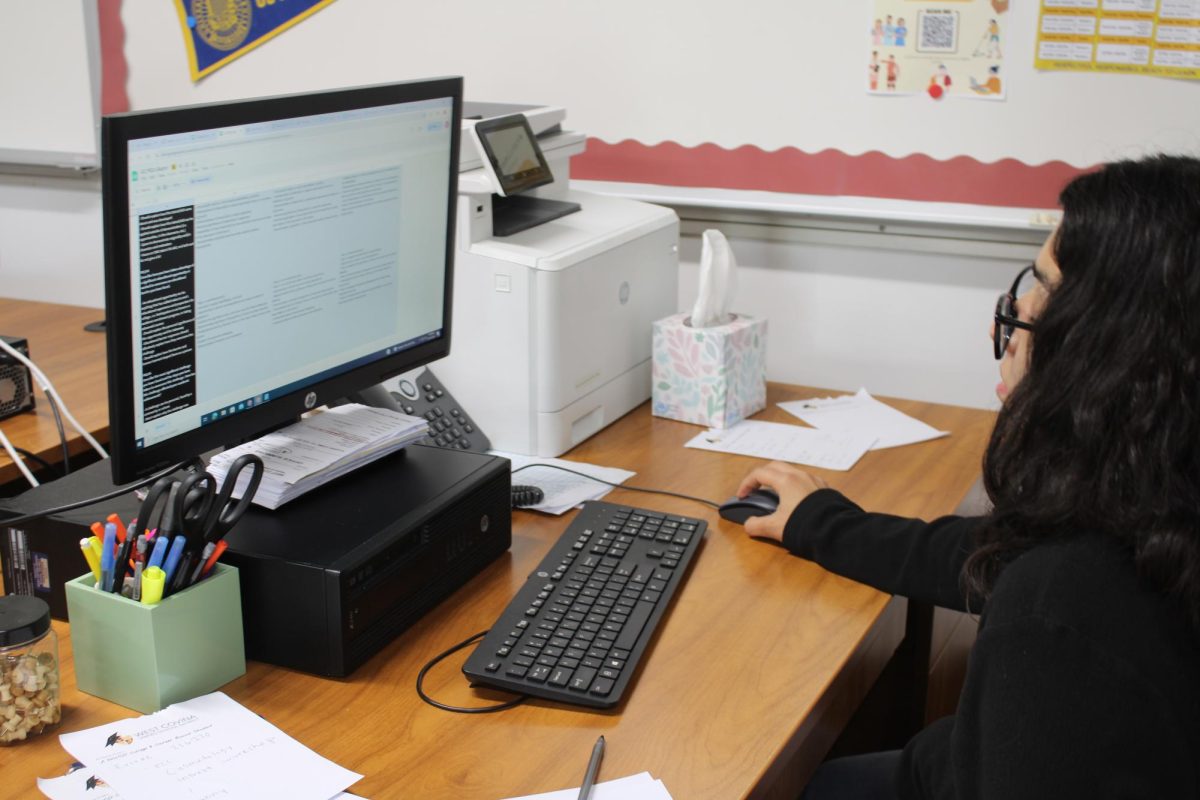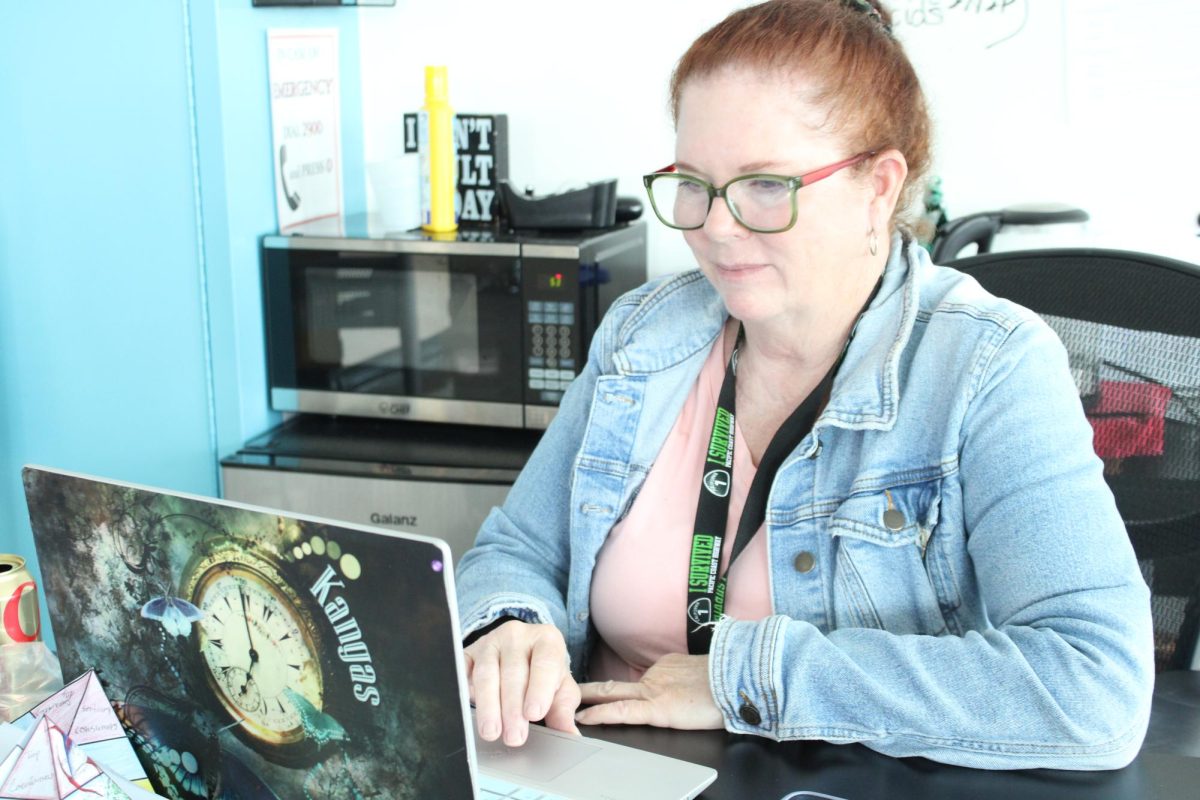
With global temperatures reaching record highs, discussions about the causes and consequences of climate change have become more profound. The phenomenon continues to shape weather patterns, ocean levels and ecosystems, raising questions about how the planet and its people will adapt in the years ahead.
Advanced Placement (AP) English teacher Tonatzin Rodriguez described the environmental changes she has observed in recent years.
“It’s causing temperatures to rise, ice to melt and land and water systems to change around the world,” Rodriguez said.
Climate change affects more than just local weather; rising temperatures, changing ocean levels, stronger storms and shifting ecosystems are creating widespread impacts on both human and natural systems. Shifting weather patterns can also disrupt agriculture, water supplies, and wildlife habitats because crops, freshwater sources and animal populations are highly sensitive to changes in rainfall, temperature and seasonal cycles.
According to the National Oceanic and Atmospheric Administration (NOAA), a federal agency dedicated to understanding and predicting changes in the Earth’s oceans, atmosphere and climate, noted global sea levels have increased by about 3.6 inches since 1993 and continue to rise by roughly 0.14 inches per year.
The 2024 National Aeronautics and Space Administration (NASA) report “Extreme weather and climate change” notes that as the planet warms, the atmosphere can hold more water vapor, leading to heavier storms, flooding and droughts. The report also shows that melting ice is worsening because higher global temperatures cause more surface ice to melt, while warmer ocean water erodes ice from below, which accelerates the overall loss and contributes to faster sea-level rise.
Rodriguez emphasized that these environmental shifts will likely continue to affect both human and natural systems if global temperatures continue to increase.
“Eventually, that oceanfront property won’t even be there anymore,” Rodriguez said.
Environmental science teacher Jill Cyhaniuk shared similar concerns, emphasizing how human activity contributes to climate change through emissions from vehicles and factories.
“The heating up of the Earth is causing a lot of weather changes that are not typical of the weather we have; we’re seeing more severe weather like tornadoes, flooding and hurricanes,” Cyhaniuk said.
According to a report from NASA’s Goddard Institute for Space Studies (GISS), 2023 was the hottest year on record, with the global average temperature reaching 1.18 degrees Celsius (2.16 degrees Fahrenheit) above the 20th-century average. The report notes that this rise contributes to more frequent heatwaves, stronger storms and longer droughts, which affect ecosystems, food production and water availability worldwide.
Cyhaniuk addressed the role students can play in responding to climate change and the actions they can take to help reduce its effects.
“Students should understand what they can do to try and stop it or decrease it,” Cyhaniuk said.

Many states, including California, are working to expand renewable energy use. However, the transition presents challenges.
“One thing we could use more of is solar energy, but the problem is we don’t have enough charging stations for all the EV (Electric Vehicles) cars the governor wants us to have,” Cyhaniuk said.
According to the California Energy Commission, the state aims to install over 250,000 public charging stations by 2025, though fewer than half that number are currently available. This shows the gap between clean energy goals and the infrastructure needed to support them. This is a reminder that combating climate change involves not only awareness but also large-scale planning and investment.
Environmental science teacher Maggie Holland offered a perspective that emphasizes the role of natural processes in climate change.
“The largest cause for climate change is just the natural processes of Earth that have been happening for millions of years before humans had any effect on it. We may be accelerating climate change, but I don’t believe we are the cause of it,” Holland said.
According to the NASA article “The causes of climate change,” Earth has experienced multiple natural climate shifts over millions of years due to factors such as volcanic activity, variations in solar energy and changes in Earth’s orbit. These natural cycles have historically caused periods of warming and cooling before industrialization.
Holland also spoke about human activity and its effects on habitability.
“I think we are not so much damaging the planet, but we are damaging our ability to live on the planet. It’s always good to reduce pollution and not be wasteful of our resources, but I think most of it is just the natural processes of our planet,” Holland said.
The Environmental Protection Agency (EPA) article “climate change and human health” reports that human activities, including pollution, can impact local ecosystems, public health and access to natural resources. Understanding the effects of climate change can help students consider their role in addressing environmental challenges and preparing for a changing world. Students can also take practical steps to help limit climate change such as conserving energy, reducing waste, supporting renewable energy and making sustainable choices in transportation and daily habits.







